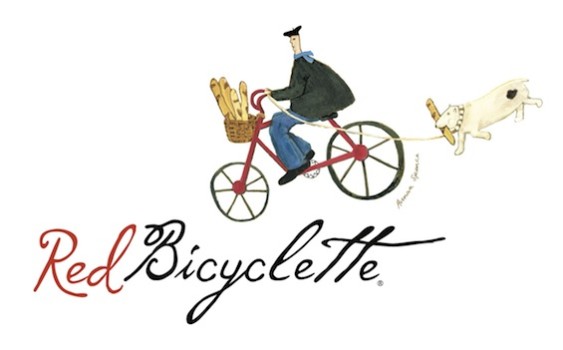The world of wine might seem like a rarefied microcosm of sophistication and gentility. It is, in fact, a down-and-dirty global industry with some fairly outsize figures, high-stakes drama based on evolving markets and changing tastes, and its fair share of scandals. Here is the story of a particularly juicy (pardon the pun) one.

Cute label, right? Too bad the wine it contained wasn’t what it said!
You might remember a wine label with a jaunty little Frenchman riding a red bicycle and toting a basket of baguettes. That seems harmless enough, right? It was called Red Bicyclette, and was supposedly Pinot Noir came from the Languedoc that was distributed by wine behemoth E&J Gallo in the U.S.
The only thing was, it turned out not to be Pinot Noir at all…a fact that only came to light after about 18 million bottles of it were sold!
Back in 2006, E&J Gallo decided to ride the Pinot Noir trend train (thank you, Sideways) and release a price-conscious Pinot Noir in the U.S. To do so, it contracted a wine co-op and broker (basically like a bunch of grape growers that pool their harvest to make wine together) called Sieur d’Arques in the French town of Limoux. They, in turn, contracted a wine merchant house called Ducasse to buy up Pinot Noir from other growers in the region.
From late 2006 to early 2008, about 13.5 million liters, or 18 million bottles, were sold to E&J Gallo. Not only that, but the co-op was selling the Pinot Noir for under 0.6 euros per liter instead of the 0.97 euros per liter comparable Pinot Noir was going for on the open market.
Those numbers piqued the interest of the French Customs office, who noted that the entire region of Languedoc only produced about 5 million liters of Pinot Noir a year at the time. Apparently all those French winemaking, appellation and labeling rules have a point! Something bizarre was going on.

Languedoc produces a lot of wine. Just not a lot of Pinot Noir.
Sure enough, when the French authorities investigated, they found that a mere fraction of the wine was actually Pinot Noir, while the bulk of it was made from Merlot and Syrah.
Mon dieu! What could this mean for the French wine industry? Would consumers lose confidence in what they were drinking? Would Languedoc be left out to dry, so to speak? In order to make a point, 12 individuals ranging from winemakers to brokers and merchants were put on trial in the city of Carcassonne.
Here comes what is perhaps my favorite part of this whole story. One of the defense lawyers argued, “Not a single American consumer complained.” Another lawyer tried to make the case that the wine had “Pinot Noir-like characteristics.” He was literally trying to say no harm no foul. No one had been physically hurt, and the American consumers hadn’t known they weren’t getting Pinot Noir, so what difference did it make?

Why couldn’t someone at Gallo or in the general public tell the difference?
The judge thankfully disagreed, saying that the case could cause irreparable damage to the French wine industry and that of Languedoc in particular, and handed down sentences and fines totaling about 180,000 euros, some of which were as little as 3,000 euros each, and more of a symbolic gesture demanded by the Customs office.
That’s barely a drop in the bottle, but given the fact that no one was injured or caused personal harm, the sentencing was limited to financial considerations. If they’d truly tampered with the wine, however, perhaps they would have been sent to the guillotine.
The one major question that’s left is, what part did E&J Gallo play in all this? Though it assumed the role of victim in the French coverage and trial of the case, surely the company has quality control departments, or at least a few well-versed wine tasters, who could have determined the wine being sold was not Pinot Noir. Did no one at the company taste the product before releasing it on the market? Were they just inept, or did they willingly look the other way? The company only imported about 20% of the wine in question, so the effects were limited, but its whole supply chain rightfully came under scrutiny.
My takeaways from this scandal are the disdain with which some wine professionals view the drinking public, and the need for us wine consumers – be we avid or amateurish – to educate ourselves as much as possible about the wines we choose, how and where they are produced, and what makes them special.
To that end, I would encourage you to go out and try as much wine as possible. That way, if you ever come across a questionable bottle, you’ll know your Pinot from your Merlot.

